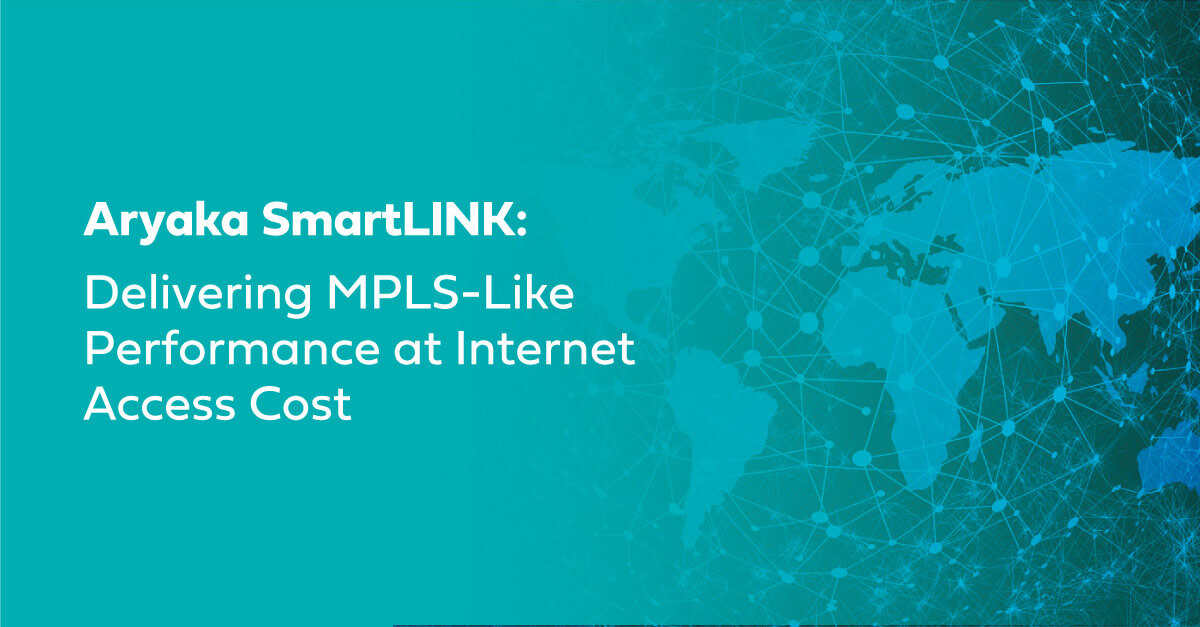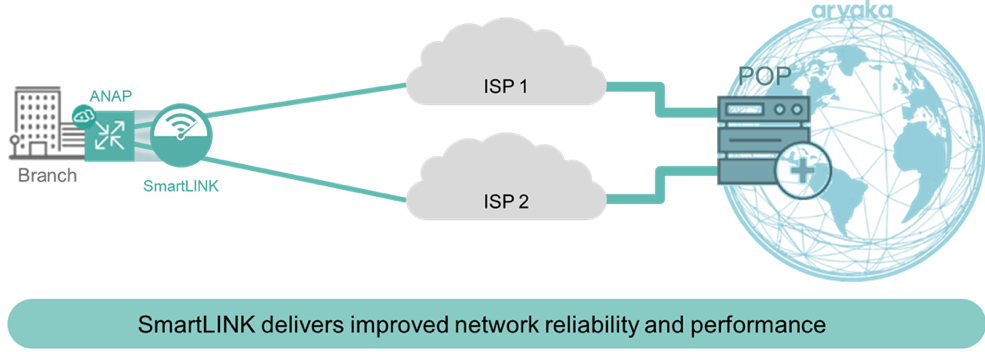Aryaka SmartLINK: Intelligent Resiliency for the last-mile

While internet performance has steadily improved in many regions, many enterprises still shy away from entirely replacing their MPLS WAN infrastructures with more cost-efficient internet links. Internet is then most often just used to offload non-critical applications to save MPLS bandwidth for business-critical traffic that benefits from deterministic QoS and/or the perceived security advantage of MPLS.
Several factors are coming together that make that seemingly safe choice for MPLS continuity something that needs to be considered under new parameters:
- The mass migration to the cloud has rendered the traditional branch to HQ/DC backhaul architecture obsolete, since this may well result in very poor user experience (learn more about here).
- In global deployments, service providers seldom guarantee SLAs beyond their administrative domain, rendering the expectation of superior MPLS QoS performance questionable – and making a case for a global L2 core network architecture with complete control of the latency, jitter and packet loss at a global scale.
- With innovative technology, last-mile internet connectivity to the branch can perform as well as MPLS links – at a fraction of the cost.
In this blog, we’ll focus on Aryaka’s last-mile Management Solutions, the secret sauce that delivers on MPLS-like performance at internet-access cost in the Aryaka architecture. SmartLINK is one of the key reasons why many of Aryaka’s 800 customers have decided to abandon MPLS altogether.
SmartLINK operates on the last-mile internet links that connect the ANAP SD-Branch appliance to the Aryaka PoP that provides the closest entry point into Aryaka’s global L2 core network (which guarantees completely deterministic QoS SLAs to any global destination). Aryaka’s PoPs are distributed in a way that covers 95% of the world’s knowledge workers population with internet access latency of less than 30ms.

SmartLINK consists of several technologies that -when combined- minimize latency and eliminate jitter and packet loss over last-mile internet connections, which typically consist of redundant internet links provided by different ISPs. The main key technologies -be aware there are more- in SmartLINK are:
Path Selection: The Path Selection policy selects the optimal link for customers’ business-critical traffic. Path Selection actively monitors each path for packet loss and latency and selects the link with the best performance. This helps to ensure that Aryaka doesn’t send the traffic through a path that is having heavy packet loss or experiencing high latency, which eventually deteriorates network performance as well as user experience. Loss and latency thresholds can be defined to trigger path selection.
Load Balancing: Load Balancing allows customers to take advantage of both paths, primary and secondary, by sending alternating packets down alternate paths. The traffic is distributed across the links on a per-packet basis in a round robin manner, resulting in very efficient resource utilization.
Path Replication: Enabling the Path Replication policy can be considered as a loss recovery mechanism. Path replication allows customers’ selected traffic to be replicated over the primary and secondary links. If one of the links experience loss, the second link delivers the same packet to the peer. Enabling Path replication delivers duplicate packets between peers. The remote peer consolidates duplicate packets. Path Replication can be applied to any kind of QOS traffic
Timed Replay: When enabled, each (or a single) link automatically re-sends packets after a timed delay. This ensures the packets are received in case of loss/or no loss and causes twice as many packets to be sent per path. “Timed Replay” causes the customer’s usable SBW to be half of what he or she subscribed to. Timed Replay can only be applied with Path Selection and Load Balancing. Applying Timed Replay to Path Replication is not recommended. Timed Replay is better suited for UDP traffic, such as VoIP and video traffic.
Path Loss Adaptive Recovery: Adaptive Path Loss Recovery is a feedback mechanism that selectively retransmits lost packets on a link. This is implemented using a patented lightweight TCP-like algorithm to recover from packet loss. When the receiver, in this case, the Aryaka POP or ANAP, doesn’t receive a packet, it initiates a Negative ACK, requesting the peer to retransmit the lost packet. Hence, the amount of bandwidth required only needs to be proportional to the loss percentages over the links.
The result of applying these technologies with SmartLINK turns redundant internet connectivity into a medium that delivers on optimal, deterministic performance and provides a cost alternative to MPLS without sacrificing QoS.
Want to see a demo of SmartLINK? Book a demo here.

